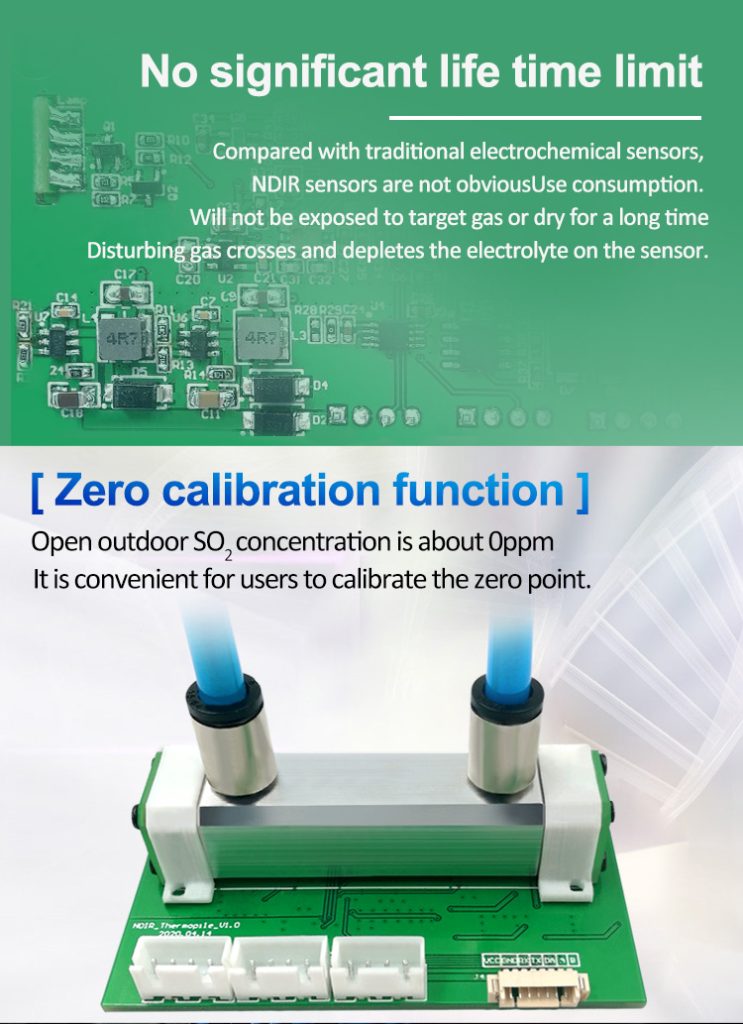NDIR sensor
A NDIR sensor is a type of optical sensor that uses infrared light to measure the concentration of certain gases in the atmosphere. These gases absorb infrared radiation at specific wavelengths, allowing the sensor to detect their presence. NDIR sensors are widely used to monitor the concentration of carbon dioxide (CO2), methane (CH4), and other greenhouse gases that contribute to global warming.

The main advantages of NDIR sensor
One of the main advantages of NDIR sensors is their high accuracy and sensitivity. They can detect gas concentrations up to parts per million (ppm), making them ideal for detecting changes in atmospheric composition. This high degree of accuracy allows researchers to get a more detailed picture of greenhouse gas emissions.

In addition , NDIR sensors are also easy to use and maintain. They are small, lightweight and can be easily integrated into larger monitoring systems. They also require little to no calibration, reducing maintenance costs and minimizing downtime.

NDIR sensor also offer a number of practical applications in environmental monitoring. For example, NDIR sensors can monitor indoor air quality in buildings, where high levels of carbon dioxide can lead to decreased productivity and health problems. They also monitor gas emissions from industrial facilities and power plants to help identify sources of pollution and develop mitigation strategies.
With the focus on climate change, NDIR sensors will become an important tool for monitoring and controlling greenhouse gas emissions. By providing accurate data on the composition of the atmosphere, policymakers will be better able to make decisions to mitigate climate impacts.
In conclusion, NDIR sensors offer a promising future for environmental monitoring due to various advantages and applications.